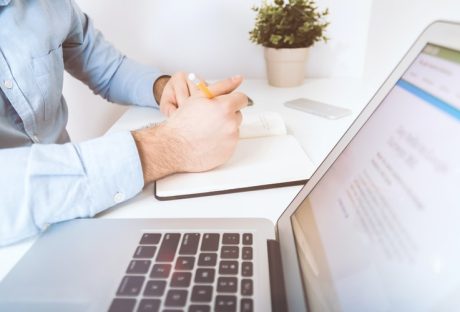Starting a new business is an exhilarating venture, but it requires substantial financial resources to turn ideas into reality. For many entrepreneurs, securing funding is one of the most critical challenges they face in their startup journey.
While there are various ways to raise capital, the choice of business structure can significantly impact a startup’s ability to attract investors. In recent years, the Limited Liability Company (LLC) structure has gained popularity due to its unique characteristics that make it an attractive choice for both entrepreneurs and investors.
In this article, we will explore how the LLC structure attracts investors and why it has become a preferred option for startups seeking funding.
Understanding The LLC Structure
Before delving into the reasons why the LLC structure appeals to investors, let’s briefly understand what an LLC is.
An LLC is a flexible business entity that combines the limited liability protection of a corporation with the pass-through taxation of a partnership. This means that owners, also known as members, enjoy limited liability for the company’s debts and obligations, similar to shareholders of a corporation. At the same time, the business’s profits and losses pass through to the members’ personal tax returns, avoiding double taxation on both the company and individual levels.
Also, setting up your LLC in your home state can save you from paying double filing taxes and fees. For instance, if you reside in Texas, you should set up your LLC in Texas. If you form your LLC in any other state, you will be liable to pay state filing fees for both states (your home state and the state where your LLC is).
The LLC business structure is designed to offer a balance of simplicity, liability protection, and taxation benefits. It allows for a more informal management structure than a corporation, making it easier for small businesses to operate efficiently. Additionally, forming an LLC involves less paperwork and lower compliance costs compared to corporations, which is appealing to startups with limited resources.
How Does An LLC Structure Attract Investors
Let us look at the benefits an LLC structure provides to its investors.
Flexibility And Ownership Structure
One of the key reasons why investors find the LLC structure attractive is its flexibility in ownership and management. Unlike traditional corporations, LLCs can have an unlimited number of members, and the ownership percentage does not necessarily need to be equal among the members. This allows startups to tailor ownership structures to suit the specific needs and preferences of investors.
Investors often seek certain rights and privileges based on their level of investment and involvement in the business. The LLC structure enables startups to create different classes of membership interests, granting different voting powers, profit-sharing arrangements, and decision-making rights. This flexibility is particularly appealing to angel investors and venture capitalists who want to be actively involved in shaping the company’s direction and decision-making process.
Furthermore, LLCs permit the inclusion of silent or passive investors who wish to contribute financially without participating in day-to-day operations. By offering diverse membership options, startups can attract a broader range of investors, each bringing their unique expertise and resources to the table.
Limited Liability Protection
Investors are naturally concerned about the potential risks associated with their investments. The limited liability protection provided by the LLC structure is a significant advantage for investors. In an LLC, members are generally not personally liable for the company’s debts and legal liabilities beyond their initial investment.
For investors, this means that their personal assets remain shielded from any lawsuits or financial troubles the startup may encounter. They can invest in the company with more confidence, knowing that their risk exposure is limited to the amount they’ve contributed to the business.
Limited liability protection also plays a crucial role in attracting risk-averse investors who might be hesitant to invest in other structures, such as sole proprietorships or general partnerships, where personal assets could be at stake in case of business failure.
Pass-Through Taxation
The pass-through taxation feature of the LLC structure is another significant draw for investors. In a pass-through entity, the business itself does not pay taxes at the corporate level. Instead, profits and losses flow through to the individual members’ personal tax returns. This means that the business’s income is only taxed once at the individual level, avoiding double taxation, which is a common concern with C-corporations.
For investors, pass-through taxation can be highly advantageous, especially when compared to the double taxation imposed on C-corporations. In a C-corporation, the company’s profits are taxed at the corporate level, and then shareholders are taxed again on any dividends received. This can significantly reduce the net returns for investors.
Additionally, pass-through taxation simplifies the tax reporting process for investors, as they do not need to file separate tax returns for the business and their personal investments. This streamlined approach is especially appealing to individual investors and small investment firms.
Transparency And Accountability
Investors value transparency and accountability when considering potential investment opportunities. The LLC structure’s informality and simplicity can enhance these aspects, making it easier for investors to understand the business’s operations and financial processes.
In comparison to larger corporations, LLCs often have fewer layers of management, which can lead to more direct communication between investors and the management team. This transparency fosters trust and a stronger investor-entrepreneur relationship.
Moreover, LLCs usually have less complex governance structures, with more straightforward procedures for decision-making and changes to the operating agreement. This agility allows startups to adapt to market changes quickly, which can be crucial in highly competitive industries.
Favourable Exit Strategies
Another factor that makes the LLC structure attractive to investors is the availability of favourable exit strategies. While LLCs are not publicly traded like corporations, they offer flexibility when it comes to selling or transferring ownership interests.
In a traditional corporation, selling shares or transferring ownership can be more cumbersome due to regulatory requirements and the involvement of third parties like stock exchanges. In an LLC, the process of transferring ownership interests can be relatively simpler, subject to the terms outlined in the operating agreement.
For investors looking to exit their investment, this flexibility is a valuable feature. It allows them to liquidate their ownership interests, partially or fully, by finding suitable buyers or even negotiating with other members of the LLC. The ability to exit an investment efficiently can be a crucial factor for investors, especially those who want to maintain liquidity and pursue other opportunities.
Conclusion
The Limited Liability Company (LLC) structure offers a range of features that attract investors and make it an appealing choice for startups seeking capital. Its flexibility in ownership and management structure allows startups to customize ownership arrangements according to investors’ preferences and level of involvement.
With these advantages, the LLC structure has become an increasingly popular option for startups looking to raise capital and secure the support of a diverse and committed group of investors. As more entrepreneurs recognize the benefits of the LLC structure, it is likely to continue playing a significant role in fostering innovation and growth in the startup ecosystem.
Read Also:
























